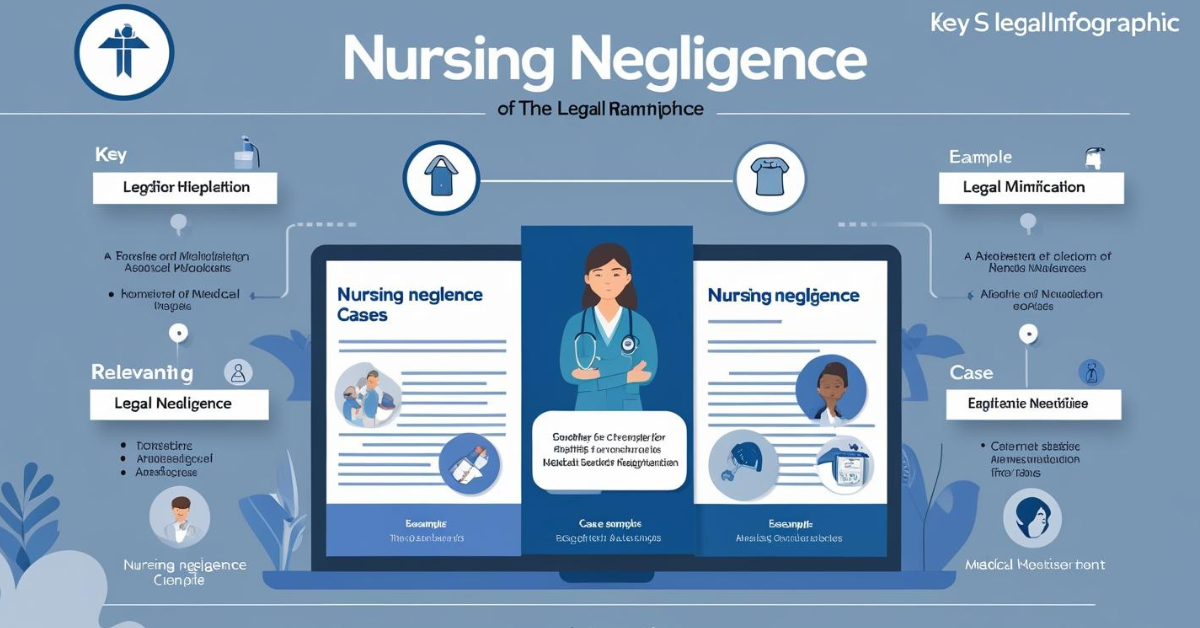The Nursing Negligence Legal Liability In Nursing Practice. Specific legal standards and potential liability for negligence in nursing care may vary by jurisdiction.
What Is Nursing Negligence Legal Liability In Nursing Practice
Nursing negligence refers to a nurse’s failure to provide care that a reasonably competent nurse would have provided in a similar situation, causing harm to the patient. This may result in legal liability for the nurse, either through a civil lawsuit or disciplinary proceedings.
Liability
In the case of nursing negligence, liability refers to the nurse’s responsibility for a possible or actual loss, penalty, burden, or expense that the law requires the nurse to compensate the victim (Brent, 2001). Personal liability defines a nurse’s account ability for professional actions to patients and families, peers, themselves, and ultimately, society (ANA, 2010).
In other words, a nurse is accountable for his or her behavior including negligent behavior. The doctrine of respondent superior, Latin for “let the master answer,” holds employers accountable for the negligent actions of their employees, or vicarious liability (Guido, 2010). Nurse leaders and managers can avoid issues of vicarious liability by ensuring that staff members are qualified and competent to perform their assigned duties and that they consistently follow policies and procedures.
Nurses are account able for actions delegated to others assisting in providing nursing care. Therefore, nurses may also have vicarious liability related to delegation. Nurse leaders and managers can be considered negligent when they do not fulfill specific responsibilities such as the following (Guido, 2010):
- Failure to orient, educate, and evaluate: Nurse leaders and managers have an ongoing duty to ensure that nurses are performing safe and competent care. This duty requires nurse leaders and managers to respond promptly to any concerns about unsafe or questionable nursing care. They must act immediately to investigate a situation, correct the situation, and evaluate the nurses involved. On a thorough investigation, nurse leaders and managers must follow up and document in the nurses’ employment records as evidence that the nurse is competent to practice in the clinical setting.
- Inappropriate assigning of staff and failure to supervise: Major responsibilities of nurse leaders and managers include delegation, assignments, and supervision of staff. Nurse leaders and managers retain liability when making assignments and delegating tasks; therefore, they must be knowledgeable about staff education, qualifications, and experiences.
- Unsafe staffing: Many state and federal legislation as well as regulatory agencies mandate adequate and safe staffing in health-care institutions. Nurse leaders and managers must address any unsafe staffing issues.
- Negligent retention practices: Nurse leaders and managers have a duty not to allow staff members to continue to work if they consistently function below the accept able standard of care.
- Failure to warn: Nurse Leaders and managers must provide factual and objective information to subsequent employers.
Failure to warn potential employers of employee incompetence or substance misuse can lead to potential liability. The challenges for nurse leaders and managers include determining and pro viding for educational needs, assessing competency, providing appropriate evaluations essential to enhance patient safety, and minimizing organizational liability.
Professional Liability Insurance
Aspects All nurses are vulnerable to malpractice claims. A malpractice suit can significantly impact a nurse’s life emotionally and financially. Professional liability insurance protects nurses against lawsuits related to alleged errors that occur while delivering nursing care. Professional liability insurance benefits include payment for the cost of legal advice and representation, payment for court costs, settlement, and reimbursement for lost wages incurred during a malpractice trial.
Nurses can be covered by an individual insurance policy, under an institutional policy, or as a member of a group such as a nurse-owned corporation (Aiken, 2004). Health-care institutions typically carry employer-sponsored insurance and cover nurses with representation should the need arise. However, insurance provided by a health-care institution limits protection of the nurse to only activities performed within the scope of employment.
In addition, if a nurse is sued for malpractice and as a result the employer pays for damages caused by the nurse’s action or inaction, the employer can sue the nurse to be paid back (Aiken, 2004). Therefore, it is in a nurse’s best interest to carry his or her own malpractice insurance. “An individual policy provides the nurse with 24-hour protection regardless of job description and setting” (Aiken, 2004, p. 406). The nurse would be protected when engaging in nursing activities such as volunteer work, consulting, private duty, and administering care to a neighbor (Aiken, 2004).
There are numerous arguments against nurses’ having professional liability insurance. A common argument is that if a nurse is found liable and has his or her own insurance policy, the monetary award will be higher. This is a fallacy because, to avoid prejudice and ensure justice, neither judge nor jury can be informed about insurance coverage (Guido, 2010). Another common argument is that the patient will more likely bring a lawsuit if he or she knows that a nurse has insurance.
However, a patient would know whether a nurse has his or her own insurance policy only if the nurse tells the patient. Whether a nurse has insurance coverage has no bearing on whether or not a patient will sue. The bottom line is that having professional liability insurance will not protect a nurse from a lawsuit, but it will help the nurse with attorney fees, court costs, and the financial obligations if a nurse is found negligent (Guido, 2010).
Elements of Nursing Negligence
To establish nursing negligence and liability, the following elements must be proven:
Duty of Care
The nurse had a professional obligation to provide a certain standard of care to the patient.
Breach of Duty
The nurse breached this standard of care by action or omission.
Cause
The nurse’s breach of duty caused direct harm to the patient.
Damage
The patient suffered actual damages, such as physical injury, emotional distress, or economic loss, as a result of the nurse’s negligence.
Examples of Nursing Negligence
Some common examples of nursing negligence that may result in liability include:
Medication Errors
Administering the wrong medication, administering the wrong dosage, or administering the medication to the wrong patient.
Lack of Monitoring
The patient’s condition, including vital signs, laboratory results, or changes in condition, is not adequately monitored, and these changes are not reported to the physician.
Equipment Errors
Improper use of medical equipment or lack of maintenance, which can lead to patient injury.
Communication Deficiencies
Critical information about the patient’s condition is not shared with the physician or other healthcare professionals.
Infection Control Issues
Failure to follow infection control protocols, which can lead to hospital-acquired infections.
Lack of Supervision
Patients, especially those at risk of falls or injury, are not adequately monitored.
Objects Inside the Patient
Surgical instruments or other objects are left inside the patient during a procedure.
Nursing Liability
Nursing staff can be held liable for negligence through:
Civil Lawsuits
Patients can sue nursing staff for damages due to negligent care.
Professional Disciplinary Measures
State boards of nursing may impose sanctions for negligent or unprofessional conduct, including suspension or revocation of a license.
Criminal Liability
In cases of gross negligence or recklessness resulting in serious injury or death, a nurse may be subject to criminal prosecution.
Read More:
https://nurseseducator.com/didactic-and-dialectic-teaching-rationale-for-team-based-learning/
https://nurseseducator.com/high-fidelity-simulation-use-in-nursing-education/
First NCLEX Exam Center In Pakistan From Lahore (Mall of Lahore) to the Global Nursing
Categories of Journals: W, X, Y and Z Category Journal In Nursing Education
AI in Healthcare Content Creation: A Double-Edged Sword and Scary
Social Links:
https://www.facebook.com/nurseseducator/
https://www.instagram.com/nurseseducator/
https://www.pinterest.com/NursesEducator/
https://www.linkedin.com/in/nurseseducator/
https://www.researchgate.net/profile/Afza-Lal-Din
https://scholar.google.com/citations?hl=en&user=F0XY9vQAAAAJ


